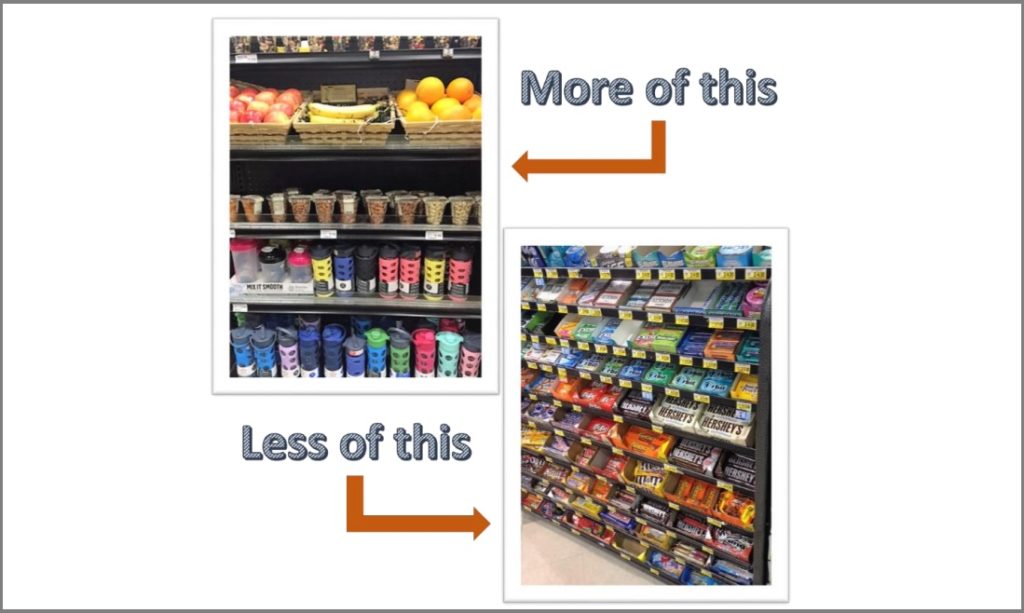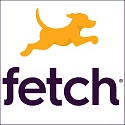
If more than three-quarters of people think grocery stores should ban candy and sugary snacks from checkout displays, why do grocery stores still sell them there?
Because people buy them.
So if junk food sells, how can so many people be opposed to it?
Because those who do buy unhealthy items at the checkout apparently end up regretting it.
That’s according to a new survey about checkout “impulse buys”. But the real conclusions depend on whom you believe, who’s asking the questions, and whether all parties involved really mean what they say.
The Center for Science in the Public Interest, which advocates for safer and healthier foods, has released the results of a survey it commissioned to gauge “Consumer Perceptions of Retail Checkout”. It found that 78% of respondents wanted candy moved out of checkout lanes, and 80% of shoppers would prefer that stores offer healthier items there.
In addition, 51% of adults admitted buying candy or soda at the checkout recently – and more than three-quarters of them said they “felt regret after doing so”.
The survey follows up on the CSPI’s 2015 report “Temptation at Checkout: The Food Industry’s Sneaky Strategy for Selling More“. That study aimed to show that healthy checkouts are possible, and potentially profitable, and “would be a major step forward.”
ALDI, CVS and Target are among retailers that have introduced healthier checkouts, though they’ve stopped short of banishing junk food to the center aisles altogether. That’s in contrast to Lidl, which boasted that it was the first grocer to ban unhealthy checkouts chainwide in its U.K. stores back in 2014, though it hasn’t made the same commitment to its new U.S. stores so far.
The effort to banish unhealthy impulse buys has gained steam in recent years, thanks in part to the CSPI report, various retailers’ moves in that direction, and the public relations savvy of Michigan mom Jane Kramer. She earned a mind-boggling amount of media attention last winter (just Google “Jane Kramer Meijer” and see for yourself) simply for starting an online petition asking Michigan-based retailer Meijer to adopt healthy checkouts, and then soliciting media coverage by sending out news releases about her effort. Resultant articles about her petition had countless internet commenters cheering her on.
But eight months later, her petition has stalled out with a relatively modest 1,500 signatures, suggesting that there’s less actual support for the effort than all the positive media coverage might have you believe. “It’s a recycled issue,” sniffed Linda Gobler, president of the Michigan Grocers Association, in an interview with the Lansing State Journal. “We went through this several years ago.”
Kramer herself recently published highlights from a chat with Meijer spokesman Frank Guglielmi, who explained why the retailer hasn’t exactly embraced her effort. “Customers vote with their wallets,” she quoted him as saying. “If one day everybody stops buying Snickers bars, you’re not going to see Snickers bars at the checkout area… People buy what they want.”
Jewel-Osco would likely agree. The Chicago-based grocer recently turned all of these surveys, petitions and complaints on their heads, finding that people apparently do want the option of having a sugary snack as a checkout treat. Last year, Jewel worked with the Mars candy company to design new checkout displays that included more space for candy and snacks. A trial run boosted the level of impulse buys from 15% to 55%, so the retailer rolled out the revamped displays to its entire chain earlier this year.
So shoppers may say they want healthier items to buy at the checkout. But in the end, it appears most shoppers would prefer to decide for themselves.
Image source: Center for Science in the Public Interest















